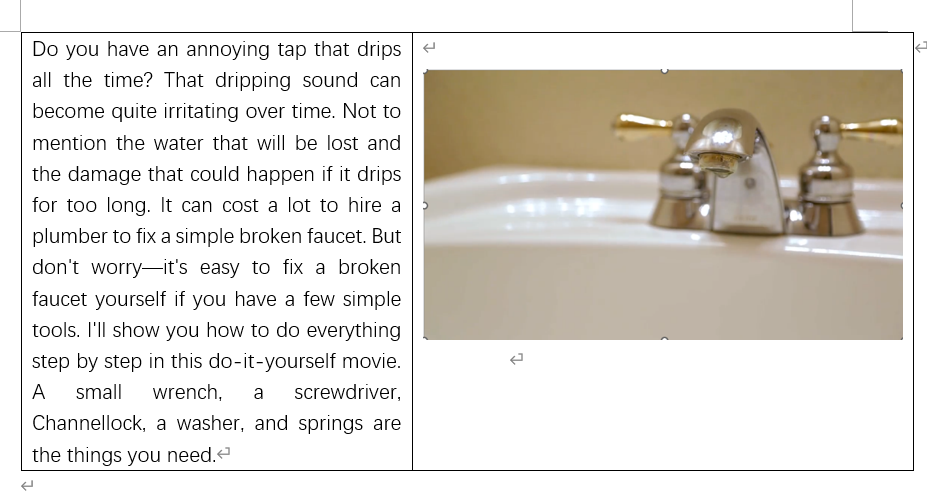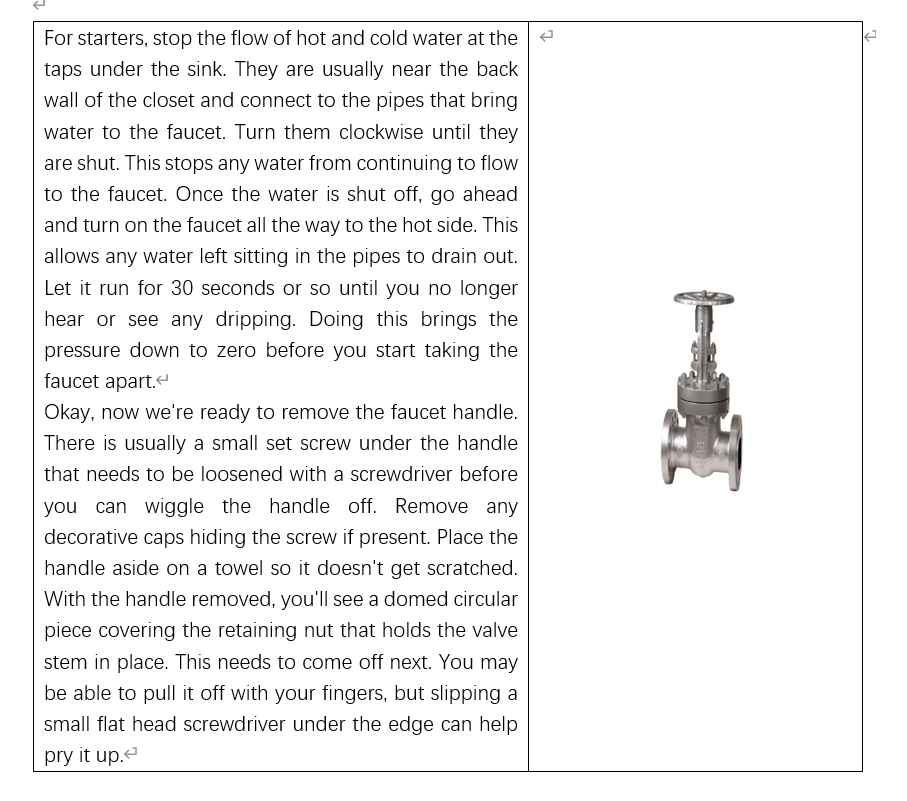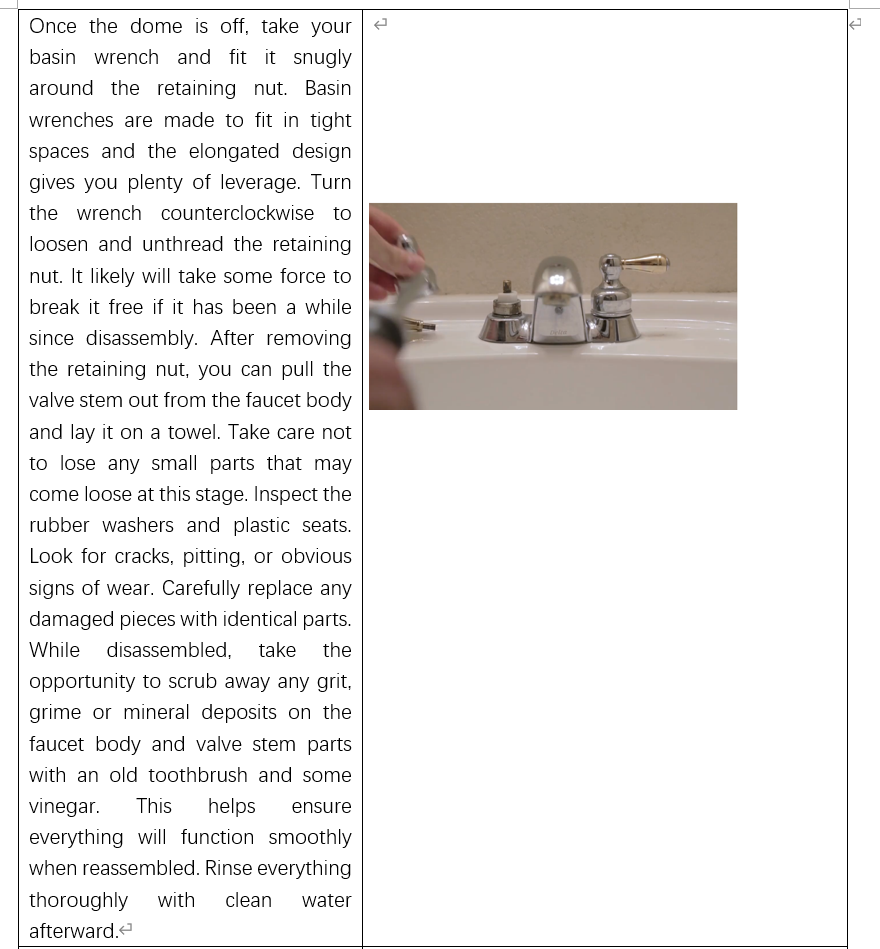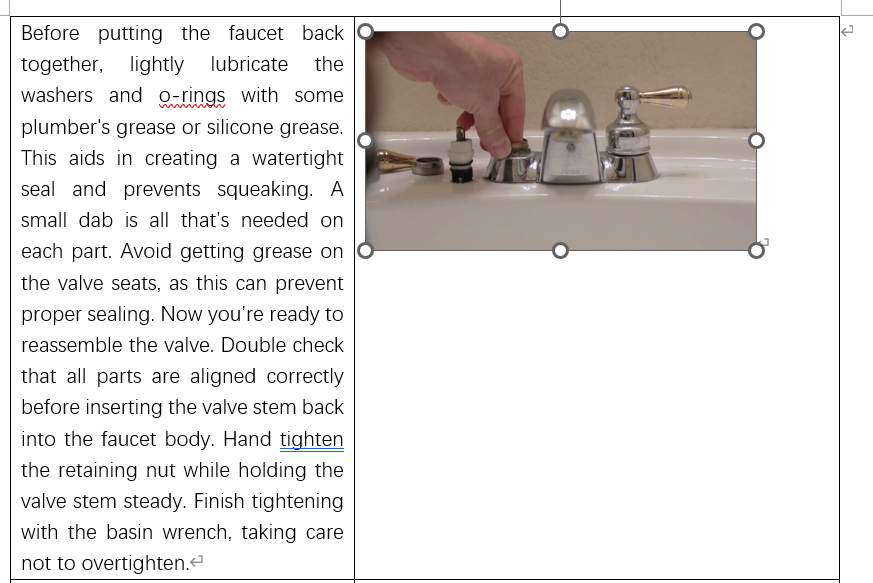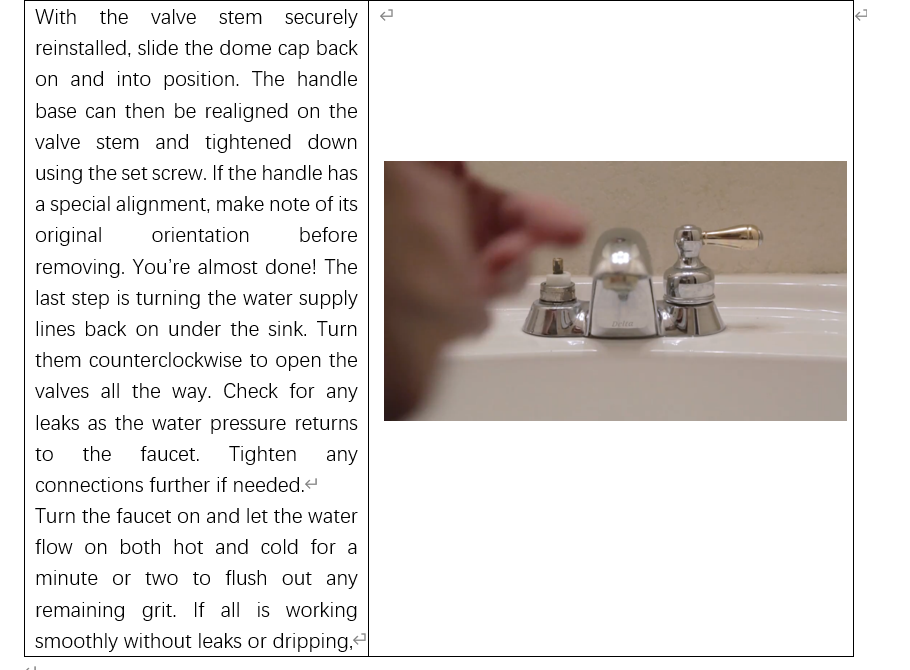The primary objective of my video was to educate the audience on the fundamental techniques required for fixing a typical leaky faucet. I carefully considered Mayer’s multimedia learning concepts and Universal Design for Learning (UDL) criteria when making this film in order to create a welcoming and productive learning environment.
I made use of Mayer’s Segmenting Principle by dividing the repair procedure into digestible chunks so that students could take their time learning the material. This strategy is advantageous because it avoids information overload and meets the unique needs of each student. Following Mayer’s Coherence Principle, I made sure the film had no unnecessary content and concentrated only on what was necessary to keep it clear and avoid cognitive overload.
I followed Mayer’s Signaling Principle, which calls for employing clear and succinct verbal cues to lead viewers through each stage of the repair process in order to improve comprehension and memory. To ensure that the learners’ visual and auditory channels were used, demonstrations were added in accordance with Mayer’s concepts of spatial and temporal continuity. A synchronized learning experience was made possible by the close alignment of the visual examples with the spoken instructions.
Additionally, by providing a variety of representation and participation options, the movie exemplifies the principles of Universal Design for Learning (UDL). To accommodate different learning styles and needs, I included vocal instructions, captions, and demonstrations to make the topic accessible to everyone.
There were difficulties in recording the process, especially in determining the best camera angles to distinguish each step of the process. Having a tripod made things easier, but it took practice to get the hang of smoothly panning and zooming. On the other hand, the voiceover narration turned out to be the easier part because I could record and edit my narration to make it flow naturally.
As I think back on this experience, I realize that future projects will need better audio quality and constant illumination. A more comprehensive plan that outlines transitions and shots from different angles might also help to make the filming process go more smoothly. My ability to produce educational videos has improved greatly as a result of this project, giving me a strong platform for future work.
In conclusion, I created an instructional video that is understandable, captivating, and sensitive to a variety of learning needs and styles by incorporating Mayer’s Segmenting, Coherence, Signaling, Spatial, and Temporal Contiguity Principles with UDL Guidelines. This established a standard for my future instructional design projects.
Storyboard:
